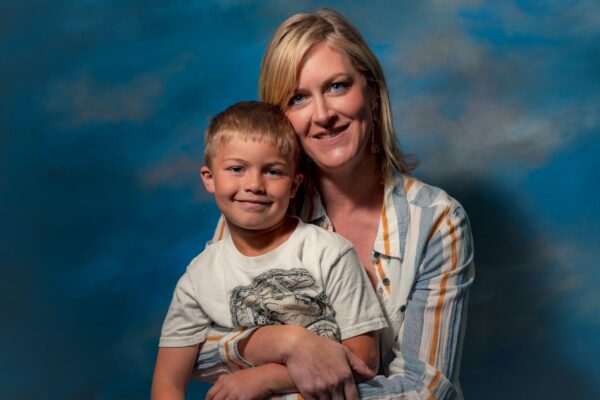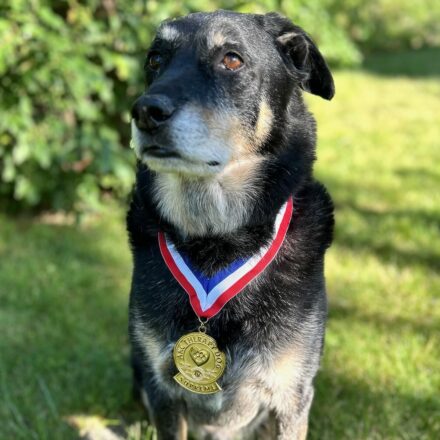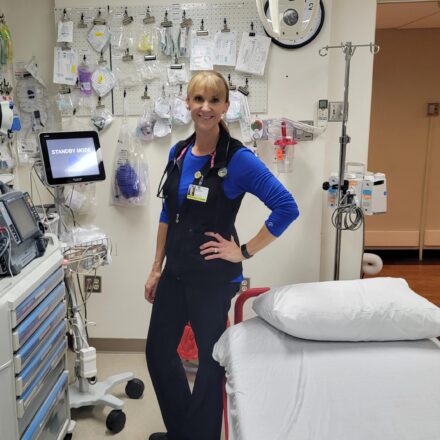

Jennifer Strait lives with her husband and their five-year-old son in south-central South Dakota. They lead a very rural life, raising grass fed beef for commercial sale, as well as working jobs in town. Their family is a busy one — they’re very active, enjoy being outdoors and are generally fit and healthy. “I’m a master gardener and so I spend a lot of time outside,” Jennifer explained. “That’s probably my favorite thing to do.”
Jennifer found herself suffering from a fairly common problem — varicose veins. Generally this is a pretty benign condition, mostly a cosmetic concern. In some instances, however, they can cause aches and discomfort. They can even be a sign or symptom of an underlying circulatory problem. Jennifer had suffered from varicose veins in her left leg for some time, causing discomfort in the warm summer months. She noticed that they had consistently worsened since the birth of her son, and in May 2022 she decided it was time to do something about it.
A visit to a local clinic led to a referral to the Monument Health Heart and Vascular Institute. There, Jennifer received a venous ultrasound of her legs, and eventually followed up with Bhaskar Purushottam, M.D., FACC, FSCAI, FSVMB. “He was incredibly attentive and asked lots of questions. Eventually he said to me, ‘I don’t think this is varicose veins,’” she said.

“We ran a few tests and what we found made me suspect that she could have a major venous blockage close to her belly button,” said Dr. Purushottam. “The fact that she’s been dealing with this for a long time let us know that this was a chronic issue.” To further assess the problem, Jennifer had a test called a venogram that essentially allowed providers to take photos of Jennifer’s veins. “We also performed an intravascular ultrasound assessment, in which an ultrasound camera is inserted into the blood vessels allowing us to assess and evaluate the vessel tissue.”
What they found was that her iliac artery had compressed her iliac vein in her pelvis, causing scarring and creating a blockage. “The vein was 90 percent blocked,” explained Dr. Purushottam. “We fixed the problem with a stent, she had an excellent result and was discharged the very same day.”
This venous compression is a vascular condition called May-Thurner syndrome. It makes it difficult for blood to return to the heart. Instead, it may pool in the leg, and may lead to deep vein thrombosis, where a blood clot forms in the deep leg veins.
“May-Thurner is actually a common condition if you start looking for it. We typically look for this problem when patients have symptoms such as left lower extremity swelling, recurrent blood clots in the left leg or pelvic congestion leg swelling,” said Dr. Purushottam.
“Recuperation was hard for me. I’m not 18 years old anymore,” Jennifer said with a laugh. “I did have to take it easy at first. I couldn’t lift much, so I wasn’t picking up my little boy, and that was difficult for me.” She has also had to take blood thinners for a few months following the procedure, and is hopeful that she can get off of them soon.
“She is doing phenomenally. Her imaging showed everything looking perfect,” said Dr. Purushottam after Jennifer’s follow-up appointment on June 2. “She has some residual back pain, which is improving and will eventually fade away. Most importantly, she feels a big positive difference in her left lower extremity.”
The process has been challenging, but Jennifer remains positive. “I’m not saying it hasn’t been hard, but I’m thankful that I’m one of the lucky ones,” she reflected. “Honestly if I didn’t have varicose veins I might not have ever even known about this, and I could have had a much worse problem. I just can’t imagine that because I’m alive and healthy, and so grateful.”
Category
Blog PostsLatest News
More Like This


